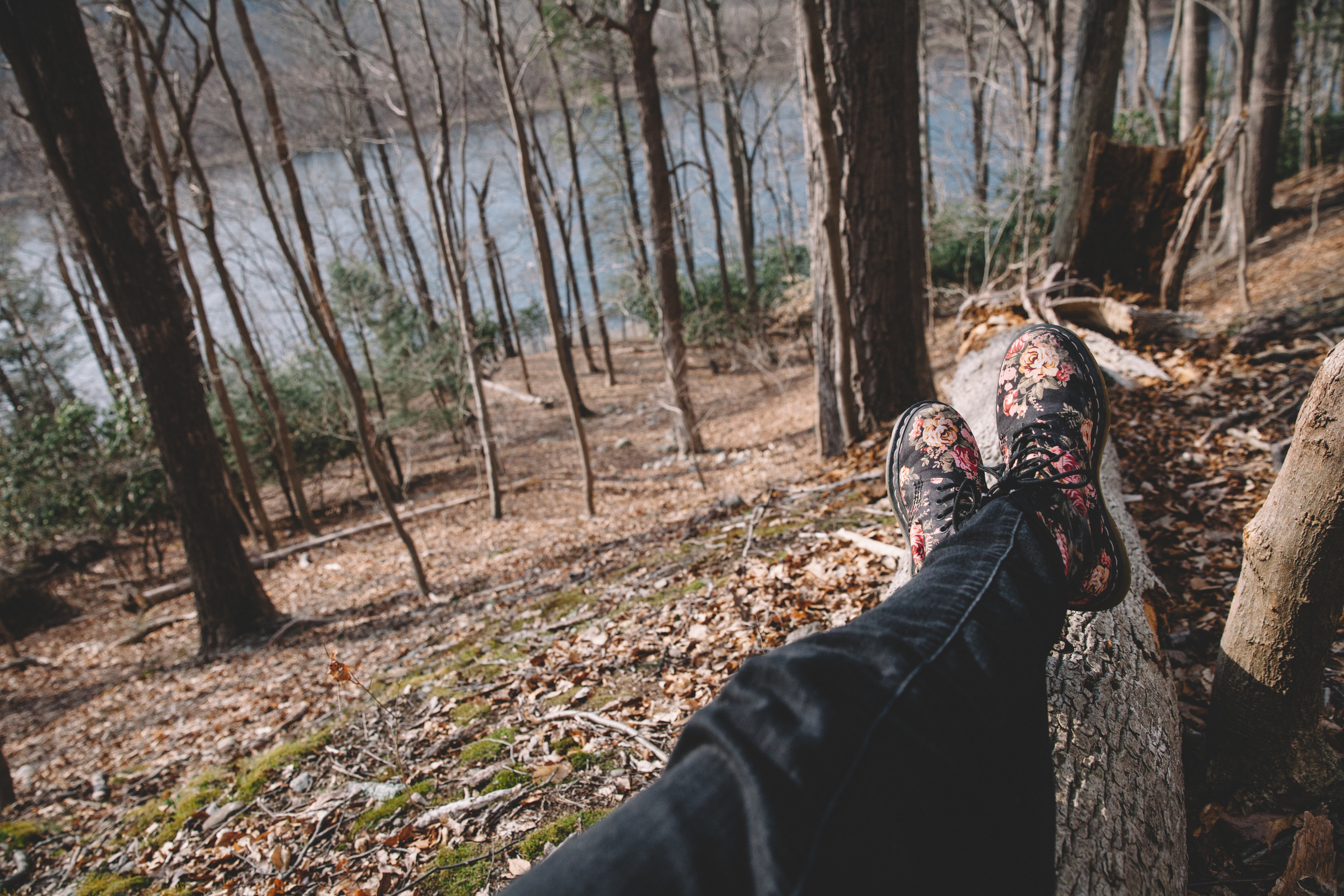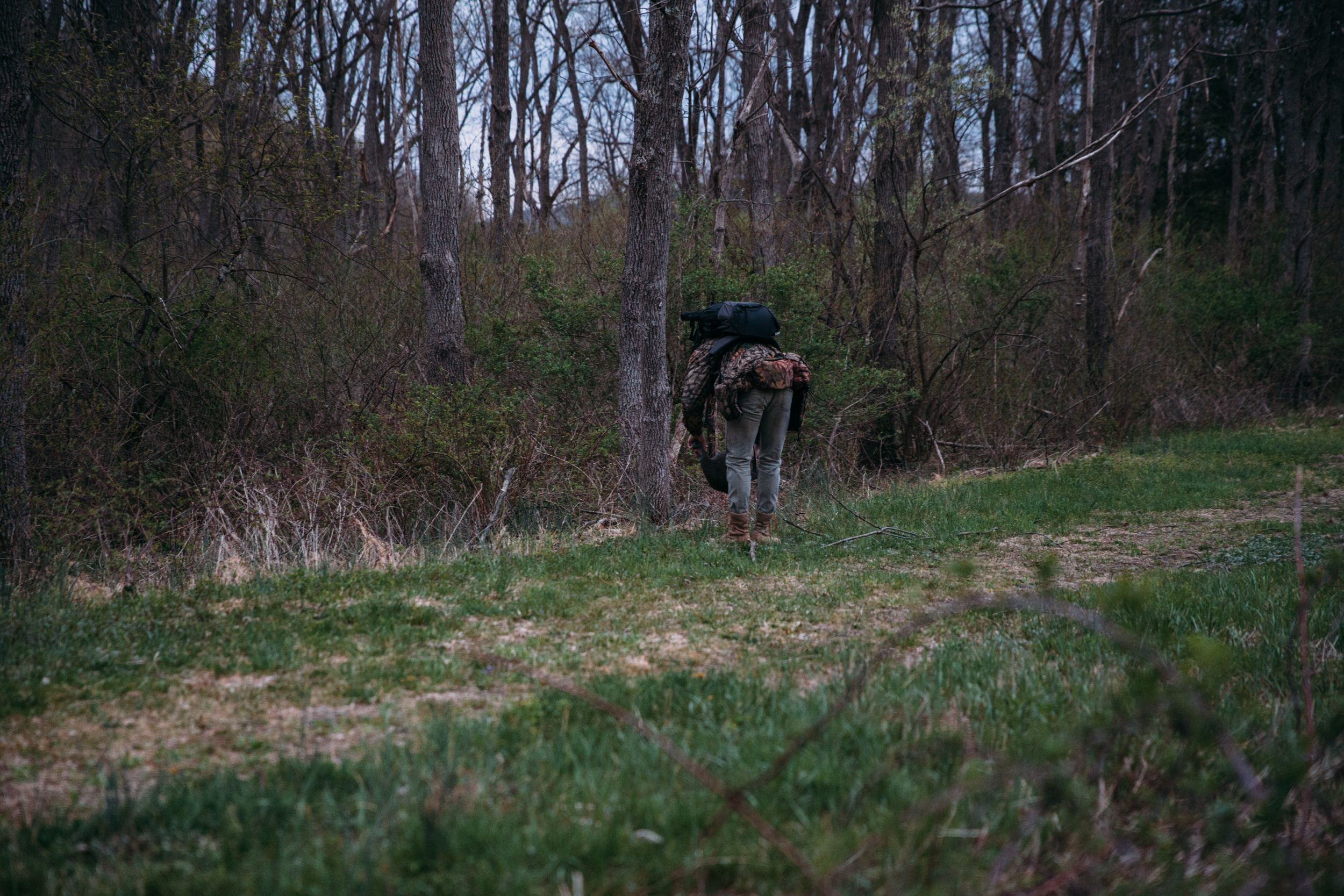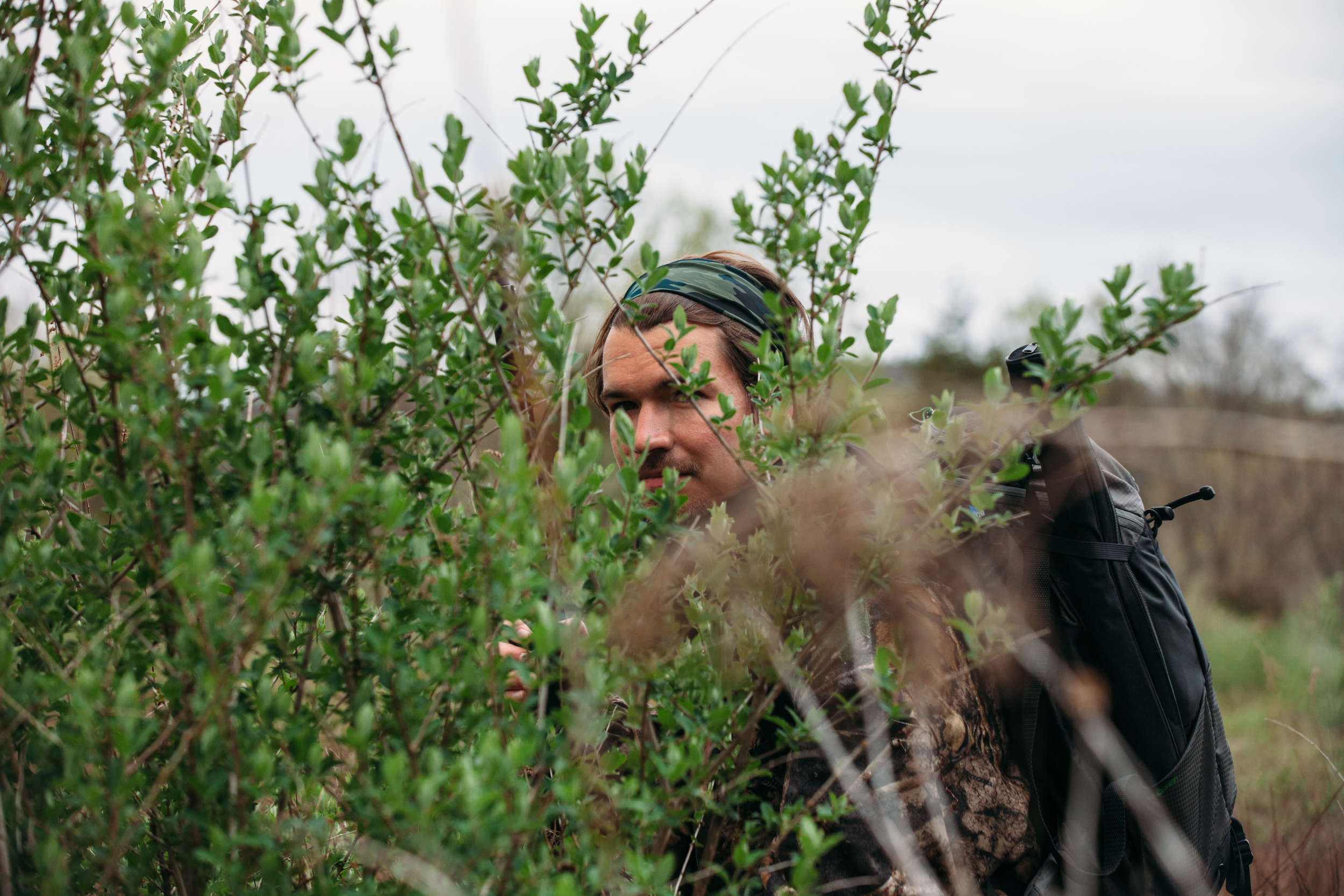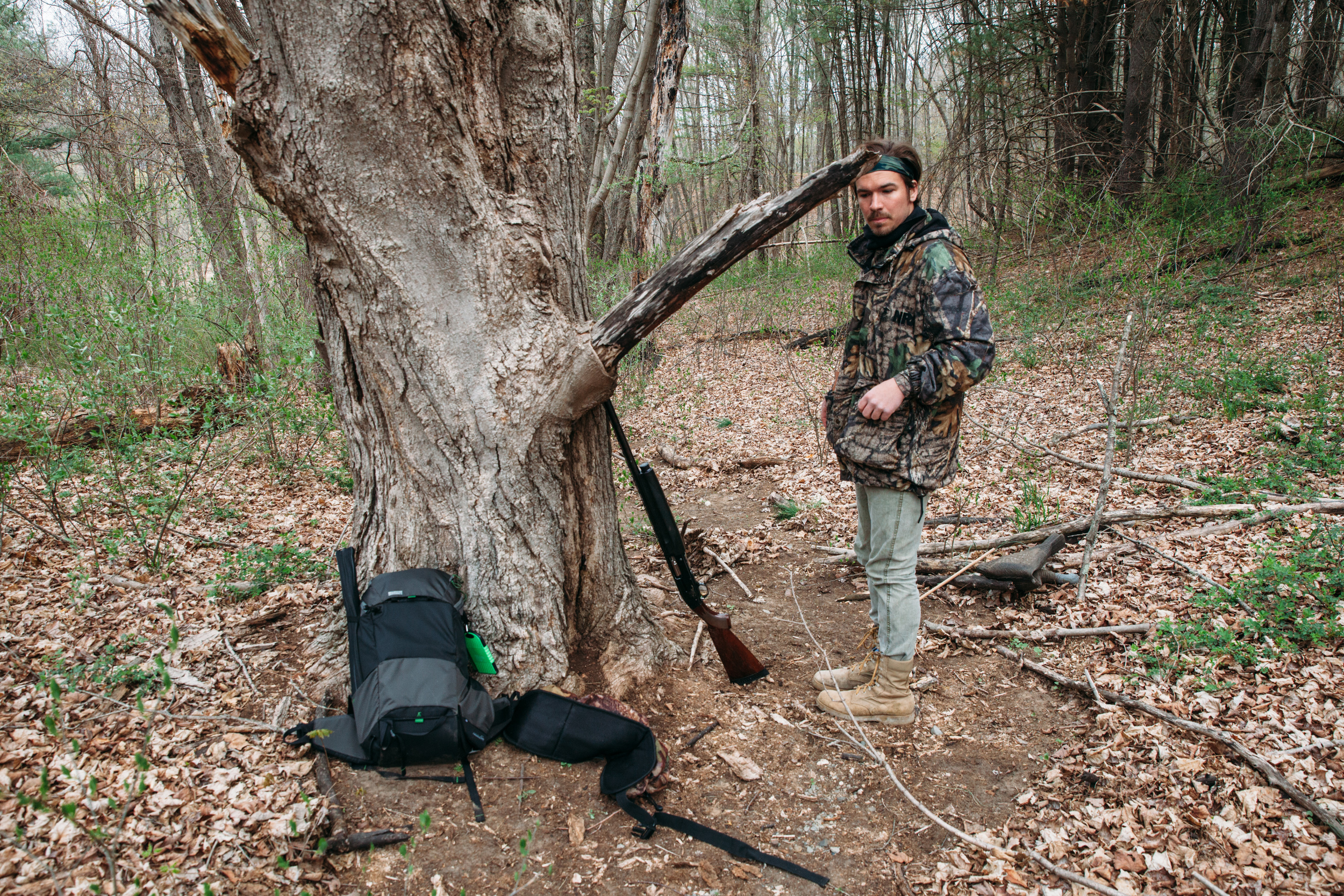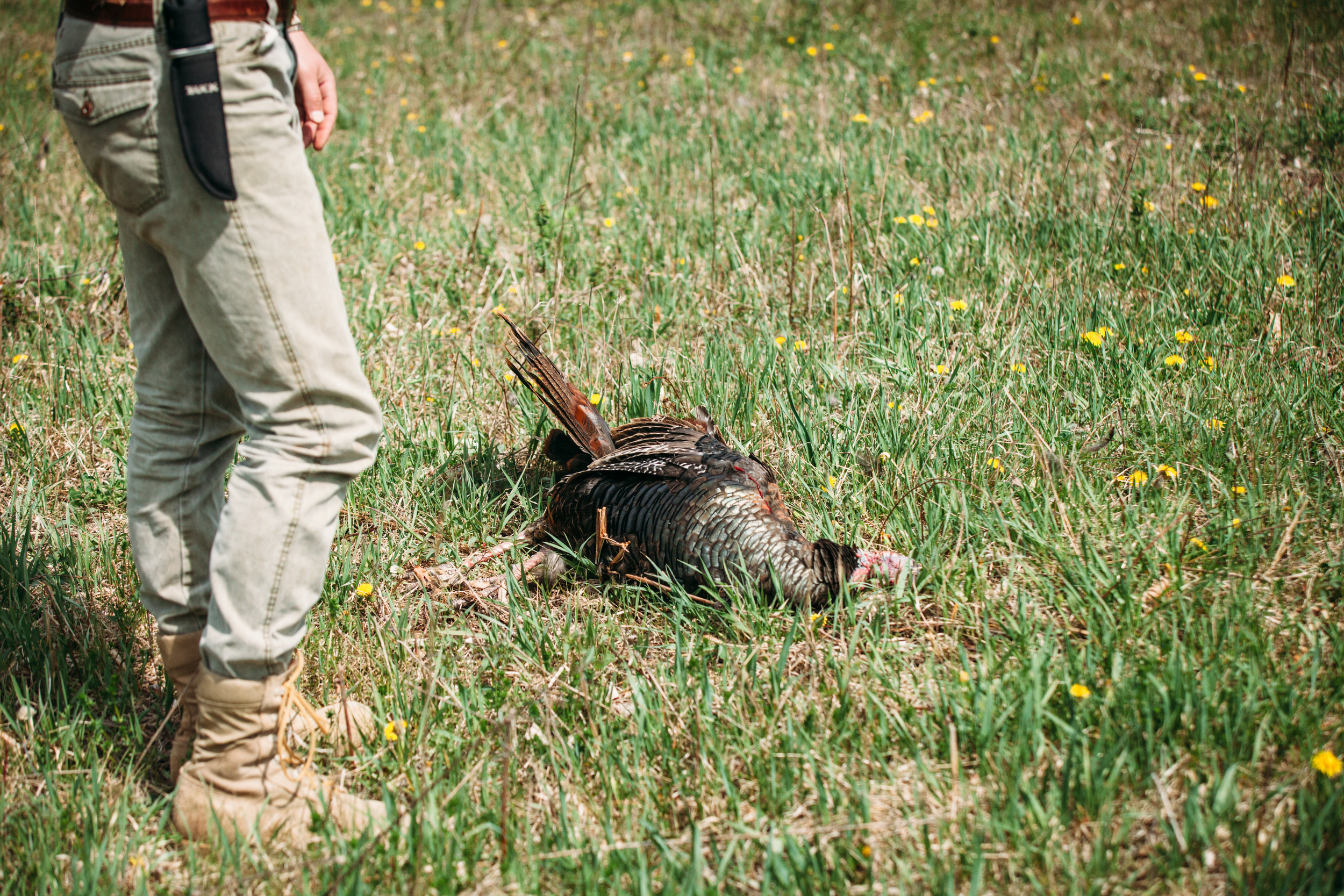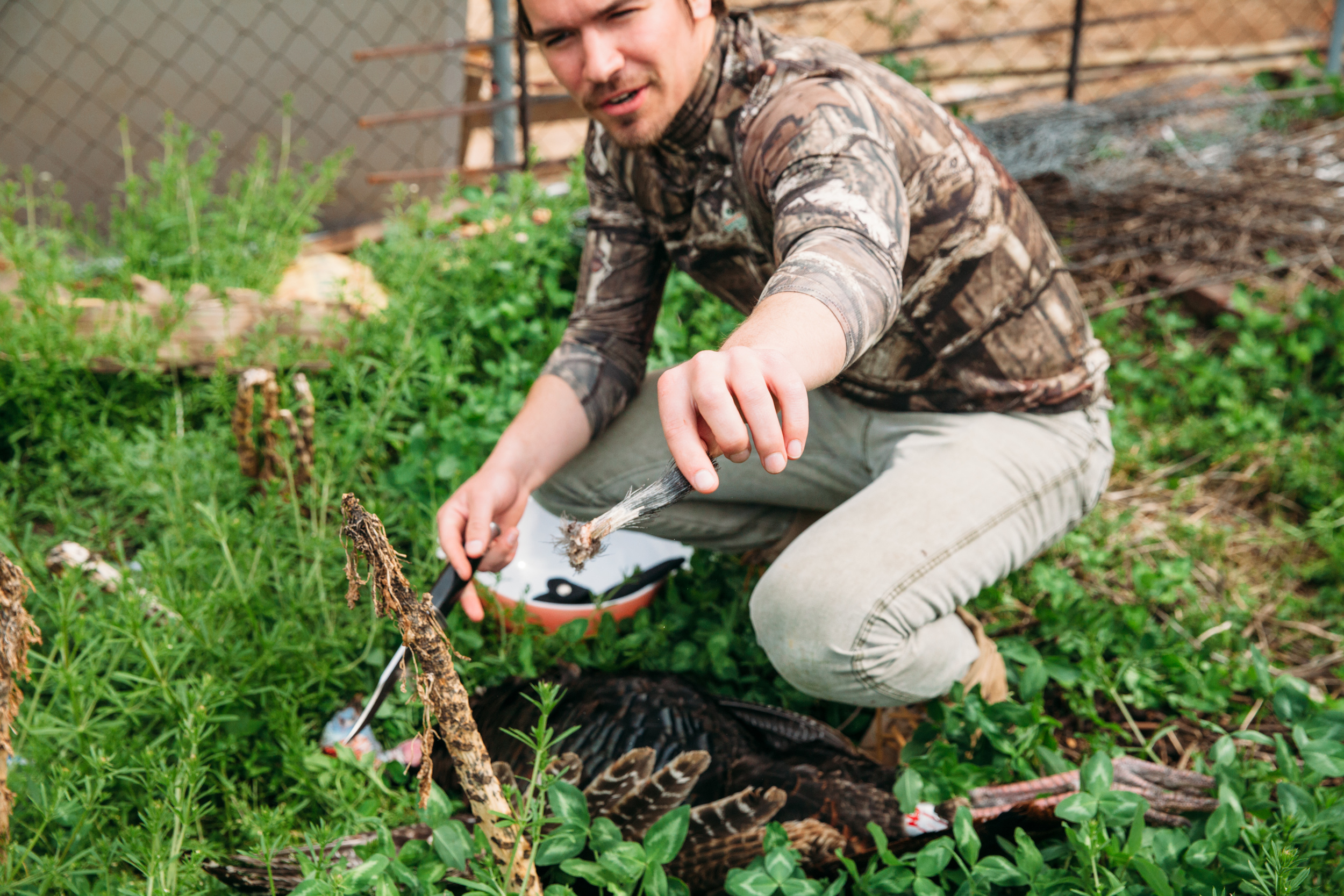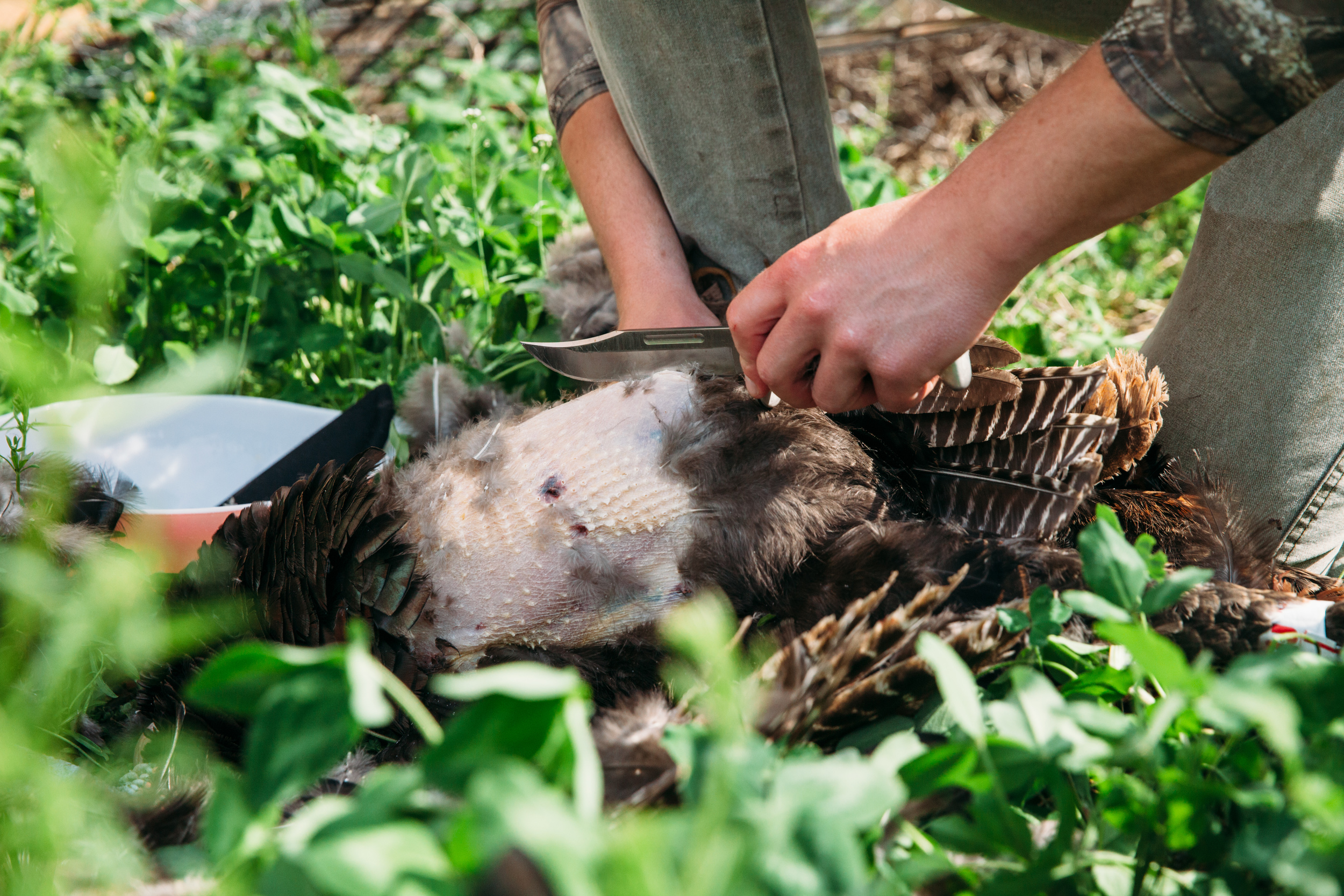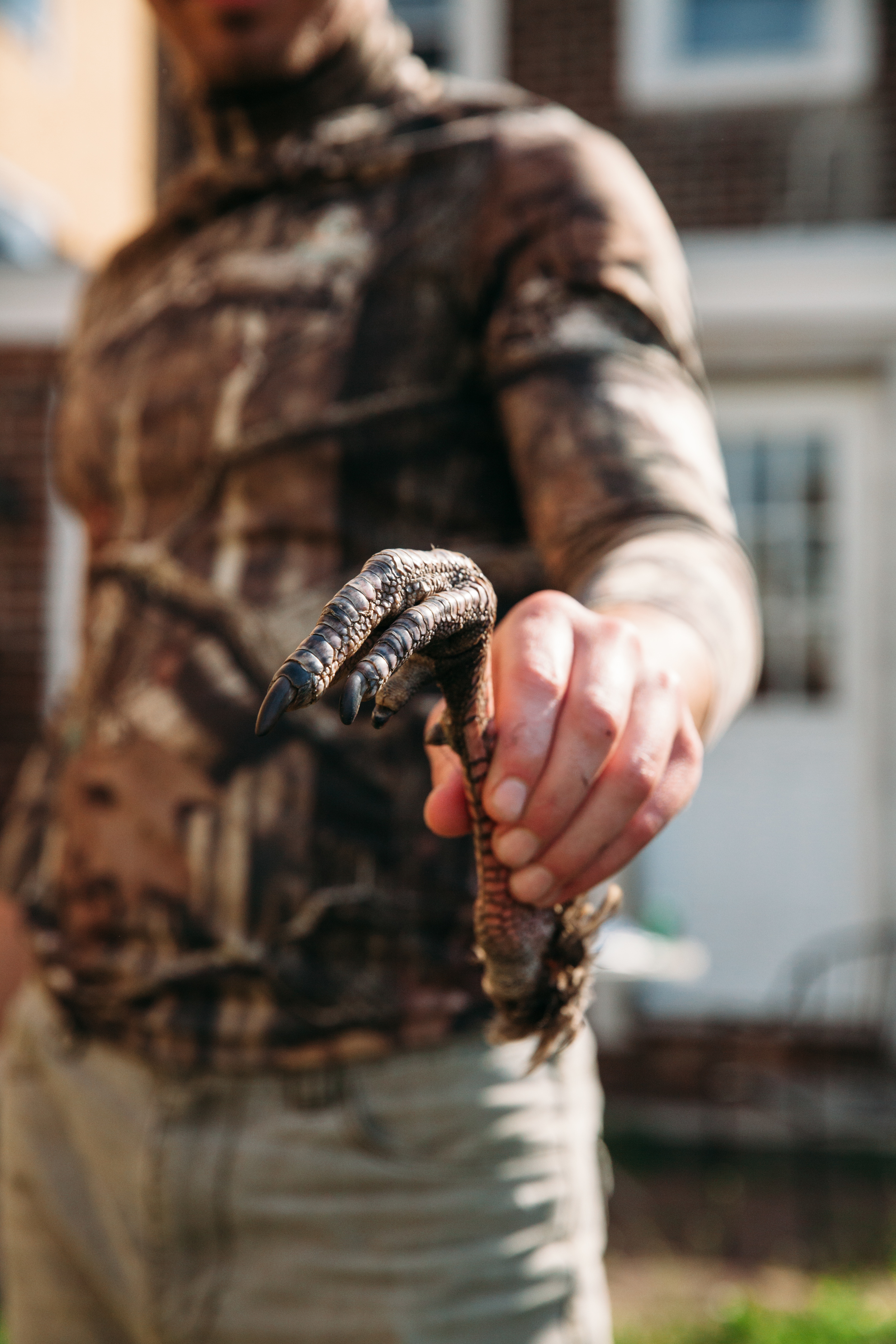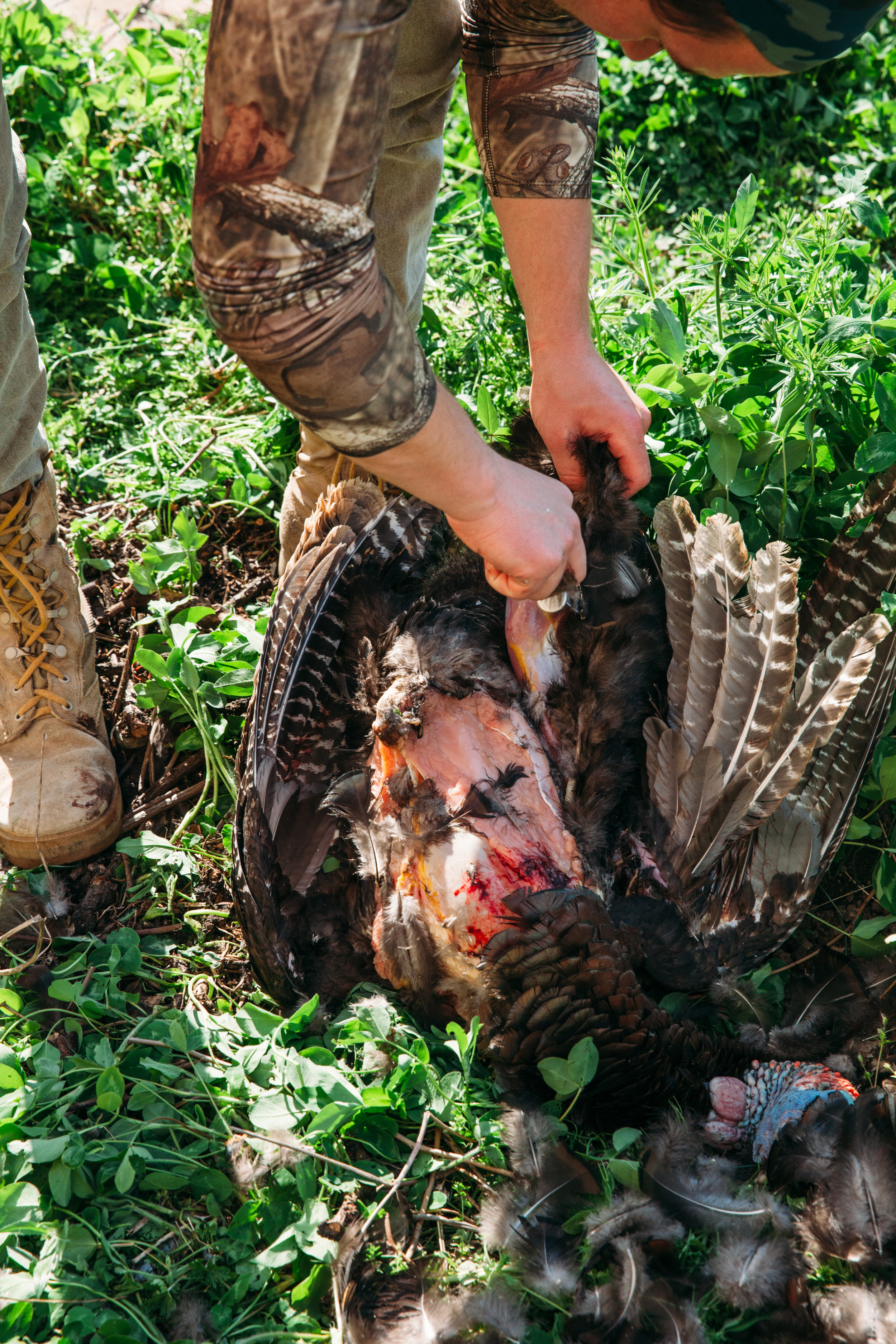The other recreational activity Zack has introduced me to is hunting. The Water Gap has provided Zack and his family hunting adventures and wild fare for over 10 years. It took some convincing, with promises of “free-range, steroid-free” meat and remote photo-shoot locations, but this past spring we embarked on a hunt for wild turkey. However, I quickly realized in observing the nuances of the hunt and Zack’s intimate knowledge of the area that has come from hunting the area for so long would provide plenty of unique photography opportunities. Here is a general guideline for the process of turkey hunting and some photographs along the way.
Locating Turkey Populations
Before the hunt can begin the turkeys’ approximate locations must be found. We narrowed our search to old farm fields and the wooded ridges that surround them. Some of the fields are completely over-grown now, some are mowed and others are still leased out and used for farming. All make for great turkey habitat. Turkeys can be located using any number of calls impersonating a turkey. Zack uses a “box call.” It is ideal to find their location just before dark because the turkeys roost in trees for the night, so you know they’ll still be there in the morning.
A Lynch Box call. The underside of the lid has a thin layer of chalk and is scraped across one side of the box.
This hen (female turkey) was getting ready to roost in the area close to where we decided to hunt.
Preparing our camp for the night. We slept in the car.
The Morning Hunt
The key is to get close enough to where you think the turkeys are roosting, but not too close as to alert them of your presence. The turkeys must be lured to you using a call, but using a decoy turkey can also add incentive, if you can find a spot open enough for the decoy to be visible while also offering enough cover for hiding. As the sky begins to lighten, the turkeys begin to talk to each other. We knew their approximate location, so we tried to plant ourselves amongst them in hopes of luring one within range. All morning we could here them calling in what seemed like every direction, but no luck.
A Browning semi-automatic for the hunting and a Mindshift backpack for the photographing.
The Late-Morning Hunt
In New Jersey turkey hunting is only permitted until 12pm to prevent hens from being disturbed as they hunker-down in their nesting areas for the afternoon. In the final hours before noon Zack likes to find a sunny-open area, preferably on a ridge close to a stream and take a little nap. After putting our decoy out about 30 yards from us, we relaxed under cover amongst dense vegetation surrounded on all sides by a mowed field. Zack would pop his head up every 15 minutes to look around and call. Sure enough, after about an hour two turkeys came out to investigate. The result was turkey chili.
Looking out from our hiding spot amongst the brush in the middle of the field.
Turkey down!
Filling out the turkey tag.
Finishing the job
Shooting the turkey is not the end of the hunt. After properly tagging and checking the turkey in at the proper location, the task becomes removing and cleaning the meat.
The turkey "beard."
Plucking the breast meat area.
After enough of the feathers are removed cut along the sternum to remove the breast meat.
After the breasts are cut out, the skin can be pealed away from the drum sticks (basically turning them inside-out) and then cut them away from the body.
If you missed part I of our favorite things to do at the Delaware Water Gap, click here.

